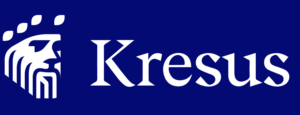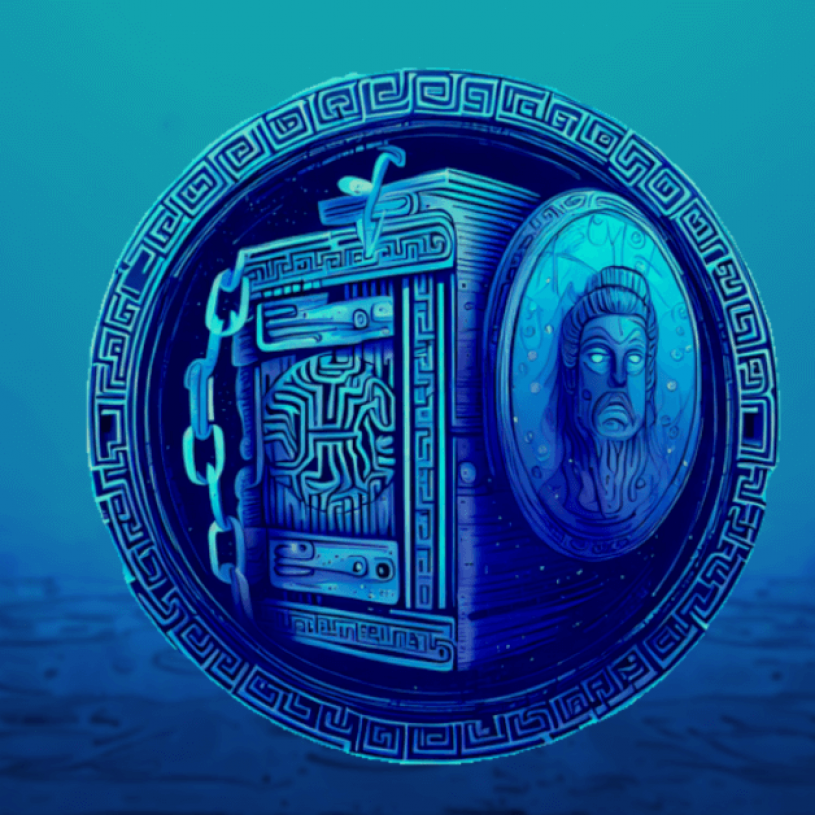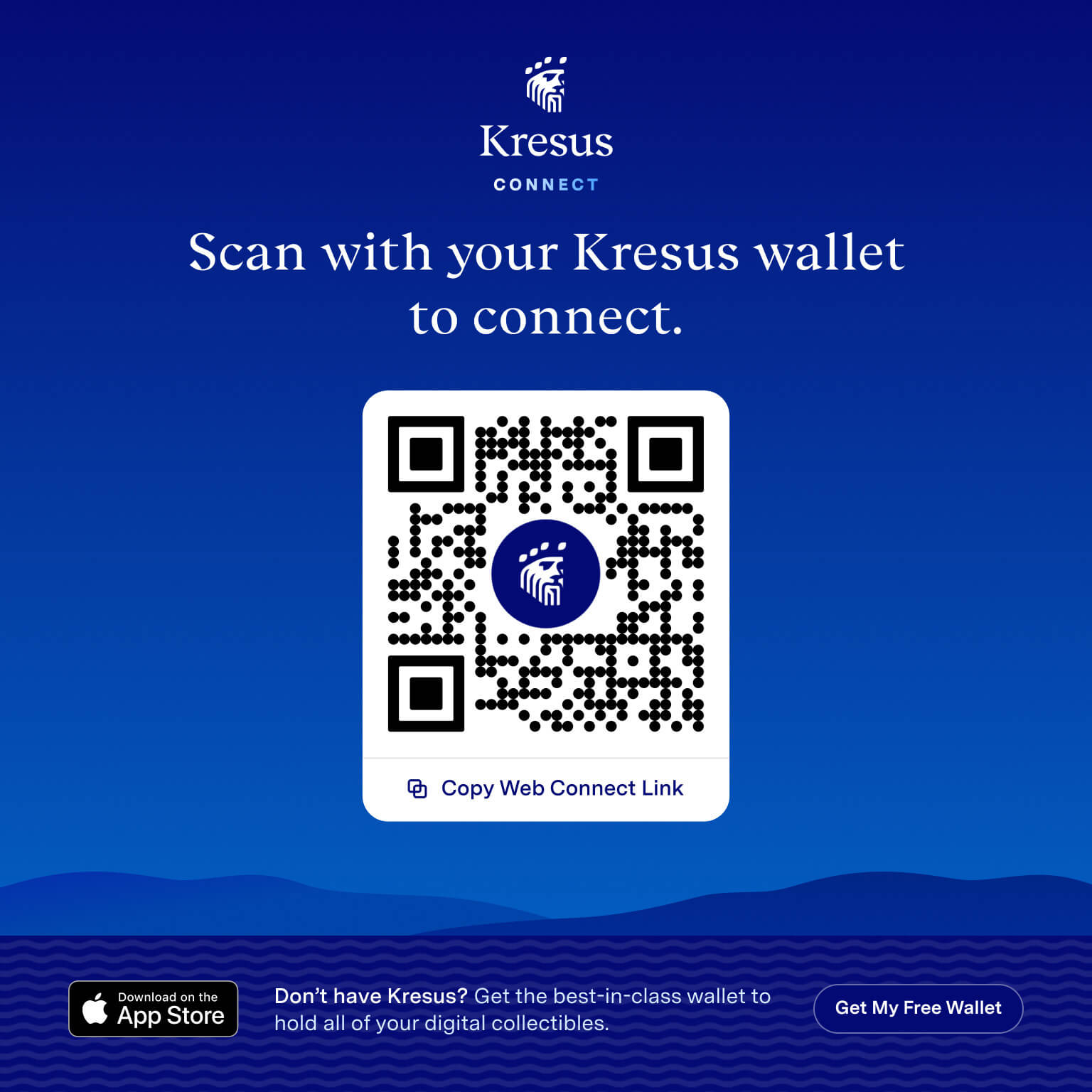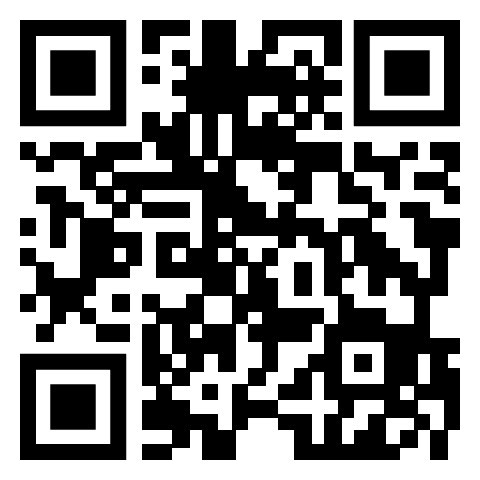There’s a saying among crypto users: “not your keys, not your crypto.” That underlies a general truth about digital currency: if your crypto or digital assets are sitting on a centralized exchange, they might be one hack or corporate implosion away from disappearing forever…
In spite of this, centralized exchanges like Coinbase, Binance, Uphold, and Kraken are the way that the majority of crypto investors engage with crypto. And while there’s nothing wrong with relying on exchanges—they are great ways to get your money on and off the blockchain—there’s way more to crypto than big, centralized exchanges.
The Kresus Super App
- Cutting edge security. Total transparency
- Easy to set up. Impossible to get locked out
- A dynamic place to learn, collect, and connect
Get it now. Scan the QR code
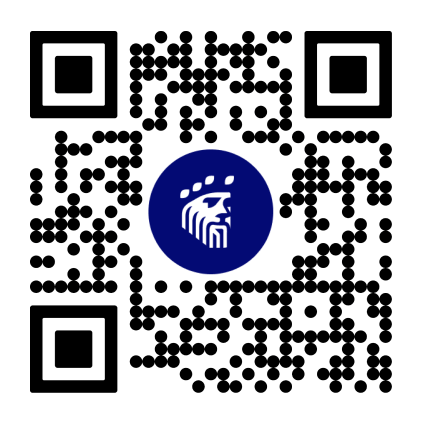
You might be surprised to learn about all that web3 has to offer once you leave the convenience of an exchange. After all, there’s a whole world awaiting the crypto curious, including things like non-fungible tokens (NFTs), decentralized finance (DeFi), and DAOs could all be truly yours.
But in order to dive in, you’ll need a non-custodial wallet like Kresus to hold your assets. This wallet will be your gateway to the blockchain and allow you to store your NFTs, crypto, and other digital assets in the simplest and most secure environment.
However, while going on chain has its risks, the same can be said with anything that’s yours—with great power comes the great responsibility of protecting your stuff. Let’s dive in an explore non-custodial wallets and how they work:
What is a non-custodial wallet?
If you’ve been in the web3 sphere for a bit, you probably know what a wallet is. Like the wallet you carry around IRL, a crypto wallet holds your crypto, NFTs, and other digital assets.
There are two primary kinds of wallets: custodial and non-custodial. As their names might lead on, a custodial wallet is one which is managed by somebody else—often by a large crypto exchanges like Coinbase and Binance. On the other hand, non-custodial wallets are wallets that only you own and can access.
Also Read:
You can think of custodial wallets like a bank vault. However, unlike the money you keep at your bank, there’s often no insurance on your funds—so you’ll have to take the custodian at their word when they promise you that your funds are safe.
Non-custodial wallets, on the other hand, are more like the wallet you take with you when you leave the house to run an errand or go to work. In other words, with a non-custodial wallet, you are your own bank. Much like your real life wallet carries cash, ID, and other valuables, a non-custodial wallet holds your digital assets and collectibles. Increasingly, it is also used to represent your digital identity.
Most people use custodial wallets or exchanges as their onramp, or introduction, into crypto. However, as users submerge themselves deeper and deeper in the world of web3, they often choose to move their valuable coins, tokens, and collectibles to a wallet that only they can access. In fact, many experienced crypto users only use exchanges to buy and sell crypto.
How can you use a non-custodial wallet?
When you set up a non-custodial wallet, the software you use creates a password to access your wallet. This password usually consists of a number of random words. This is called the private key—and it’s essential that you keep this password safe.
However, once you’ve set up a wallet, the software will also generate a public key. This is the address that you can send your assets to and from. Since most non-custodial wallets come with the highly-popular Ethereum blockchain out the box, there’s a good chance that your public key will start in 0x.
Once you know your public key, you can start to transfer assets to your non-custodial wallet. You can use it to simply store the crypto you had sitting on an exchange, which gives many non-custodial wallet owners peace of mind.
On the other hand, you can wield your newfound freedom to explore the full breadth of the crypto space. That means that you can start using your non-custodial wallet to interface with smart contracts or decentralized apps (dapps), which opens up the world of DeFi, NFTs, and DAOs. However, there are lots of different wallets and protocols—and each dapp caters to a different segment of the web3 universe. This is one reason why it’s important to get studied on protocols, platforms, and blockchains before linking your wallet and going to town.
What are the benefits of using a non-custodial wallet?
The biggest benefit of using a non-custodial wallet is the security. When you fire up a non-custodial wallet and take ownership of your own assets on chain, you essentially become your own bank.
For people who are new to the crypto space, or maybe only have a few bucks in their favorite crypto, this might not sound interesting at first. The further you dive into the space though, you’ll be able to discern the plentiful benefits of using a non-custodial wallet—ones that go beyond becoming a sovereign individual and securing your assets.
For one, non-custodial wallets unlock a wealth of new opportunities. For more on that, we recommend checking out our articles about navigating the complexities of the crypto space and the world of NFTs.
Second, by doing, you learn. Non-custodial wallets don’t just allow you to become your own bank and secure your own asset, they allow you to learn about developments in web3 and experiment with the next big thing. When you’re on exchanges, you’re the last to know about an exciting new development in the web3 universe. By going on chain, you can be among the first to go try it yourself.
Third, you’ll find communities across all sorts of exciting projects, protocols, and blockchains. These communities are the most exciting part of web3 to many of its users, and becoming apart of something bigger than crypto has attracted many people to this burgeoning space.
What are the risks of using a non-custodial wallet?
The biggest risk of using a legacy non-custodial wallet is you. In the past, your private key—the password generated for you that helps you access your decentralized identity—is needed to access your funds. If you lose it, you wouldn’t be able to recover your assets. And if somebody else finds it, they would be able to steal what’s yours.
However, wallets like Kresus have made it impossible to get locked out of your wallet. You won’t need to worry about memorizing your private key to interface with web3, but you should still be cognizant as you would with any financial application—don’t click on emails or texts from strangers, don’t go to weird websites, and research crypto projects extensively before connecting your wallet to them.
What are the best non-custodial wallets?
There are hundreds of blockchains, thousands of cryptocurrencies or tokens, and thousands of dapps or smart contracts. As you can imagine, that means there’s more than a few crypto wallets.
Some of the more recognizable non-custodial wallets include MetaMask, Coinbase Wallet, and Binance Wallet. These names are recognizable in large part because they are backed by some of the largest, most centralized entities in the business. However, they are legacy solutions that can intimidate first-time web3-ers.
One alternative to software non-custodial wallets are hardware wallets like the ones sold by Trezor or Ledger. These hardware products are fancy USB storage devices that are catered to users who own a large amount of crypto and want to keep it safe in a physical place like a lockbox. For that reason, they’ve become a hot commodity for crypto maximalists. However, they come with an upfront cost, must-have software, and a bit of a learning curve. Plus: you lose the convenience of interacting with the blockchain whenever you want.
One commonality in many crypto products is a lack of training wheels. Even long-time web3 natives have made the mistake of sending assets to the wrong wallet… or worse.
That’s why the crypto crowd, both new and old, can find a happy medium in Kresus. Kresus is a software wallet that offers a ‘catch-all’ way to interact with the world’s largest blockchains in an anxiety-free way. With Kresus, you can explore all the opportunities in the universe of web3 without worrying about getting rekt.
How? Kresus offers hardware-level security without the hard—which means you don’t need to worry about carrying around an expensive USB drive. You also can’t be locked out of your wallet and don’t need to memorize or write down your private key anywhere. And with every Kresus wallet, you’ll get a .kresus domain, which means you leave the anxiety of hexadecimal addresses in the past. In other words, Kresus has built what a non-custodial wallet should be—and you can get started for free.



